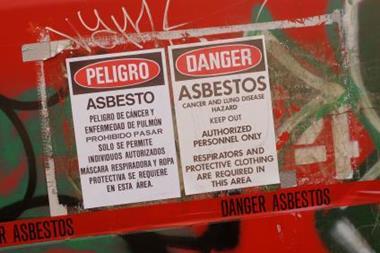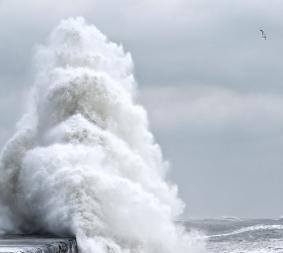What new liabilities does the EU directive introduce?
Under various pieces of law, companies have always been responsible for the pollution they cause – the ELD just brings it all together, harmonising liabilities across member states to a minimum level. But the potential impact is big. Previously, if a company caused, say, a fuel-tank leak into a local river, the regulator would clean it up and then bill the offending company for the remediation. Now, regulators have the power to demand additional improvements to damaged areas.
The legislation also makes the polluter responsible for reporting incidents to the regulator. And it encourages third parties to report pollution and compels the authorities to investigate every report they receive. As societal expectations that we live in a clean and green environment increase, penalties are only going to get tougher.
Until test cases hit the courts it is hard to say exactly what demands regulators will make or what kind of resources they will devote to investigations. In Spain there are several active claims, but they are still working their way through the legal system.
Worryingly, there are some signs that the liabilities could be huge. One of the biggest potential problems arises from a new approach to remediating environmental damage.
The ELD says that if a company causes damage to the environment it should take measures to return the environment to the condition it was in before the pollution occurred.
If the damage is irreversible, if, for example, a species has been wiped out altogether, the law says the polluter must ‘make amends’. Exactly what constitutes making amends is not completely clear. Additionally, as the directive uses the words ‘environmental damage’, not just pollution, operators could be responsible for damage caused by excessive noise or vibrations.
Will my public liability or property insurance cover me?
“Exactly what constitutes making amends is not completely clear.
Companies usually expect their public liability or property cover to protect them in the event of pollution.
Since the early 1990s, however, public liability policies have limited cover to sudden and accidental pollution. And these policies pay out for damage to thirdparty property only.
Meanwhile, property policies only kick in when pollution results from an ‘insured peril’ such as fire or flood, and is sudden and accidental.
These policies may also exclude the removal of contaminated soil, which is unfortunate since most pollution claims arise when damage occurs gradually. In such a case, the clean-up will often involve removing large amounts of contaminated soil at considerable expense.
Is the insurance market responding with new products?
In light of the Bartoline case, which demonstrated the limitations of public liability policies in the context of environmental damage, the insurance industry has begun to respond with specialist environmental insurance.
The industry has had to overcome challenges, because many of the new concepts are alien to insurers. They are also understandably reluctant to take on indefinite liabilities after their experiences with asbestos. In some cases the regulations have demanded a response from the insurance industry. In certain parts of Europe, including Hungary, Croatia, Romania, Poland, Slovenia and Sweden, operators are required by law to have financial protection of some sort.
In May, the British Insurance Brokers’ Association launched a environmental liability scheme in conjunction with Gallagher London. The scheme, underwritten by ACE European Group, provides brokers with an online premium quoting system for broad environmental cover, including first party clean-up costs and gradual pollution liability.
“Companies will need to consider whether their current insurance policies cover the costs of clean-up.
Meanwhile, Liberty International Underwriters Europe, a division of Liberty Mutual Group, launched a new environmental impairment liability unit to underwrite business. XL Insurance also boosted environmental coverage under its general liability policies issued in the UK. The cleanup costs and Environmental Liability Directive endorsement provides cover for up to £1m against environmental liabilities including on and offsite clean-up costs for gradual as well as sudden and accidental pollution events for operations within the EU.
What steps should I be taking to prevent environmental damage?
Operators can reduce the likelihood of ever being caught by the regulations by minimising the risks to natural resources.
Strategies should cover damage to species and habitats, water and risks to human health from contamination of land. But any environmental damage may be relevant if it significantly impacts humans or has adverse effects on the environment.
Companies may want to consider auditing their sites to make sure they are carrying out sufficient safety and risk mitigation activities.
However, if during its investigation a company uncovers environmental damage, or the threat of damage, the operator is required by law to disclose that to the authorities. Previously operators only had to disclose environmental damage if there was a specific requirement in an environmental permit.
Unfortunately there are plenty of other things for risk managers to be worried about besides the environment at the moment. For that reason the EU Directive may not prompt a flurry of environmental audits. Companies that have operations in sensitive ecosystems, areas of high biodiversity or near sites of special scientific interest, might prove an exception to this. In the event that environmental damage occurs, companies will need to consider whether their current insurance policies cover the costs of clean-up.
Insurance and risk managers should be reviewing their policy coverage to ensure that they have adequate cover. It may be that consideration should be given to purchasing a stand-alone environmental liability directive solution to provide for the extended liabilities.


















